DUE RECOGNITION
Major newspapers praise our turf professionals
by TurfPro Editor, Laurence Gale MSC, MBPR
I was pleased to see last week two national broadsheets, dedicating major pieces to our incredibly talented turf professionals - and not before time either!
As expected, we now face four more weeks of Covid regulations with a new date of the 19th of July to review the final opening up and getting back to normality. This will no doubt prolong the agony of having to comply with restrictions for a number of businesses especially the wedding industry, pubs and live entertainment venues.
Not an unrealistic ask under the circumstances, we have managed to comply for over eighteen months so being patient for a tad longer will hopefully help ensure we do not go into another lockdown.
To help pass the time and take our minds off it I, like many, are enjoying watching the current Euros football tournament. Can England and Scotland now join Wales in qualifying for the knockout stages?
All the stadium pitches appear excellently well maintained – which has been influenced by a band of UK grounds professionals. The high regard of these professionals was eloquently covered in a well written article in The Guardian published last week – followed up the next day by a similar piece in The Times.

Those of us that work in this profession, are very aware of the dedication, commitment and skills that are required in maintaining a natural grass / hybrid pitch in a stadium environment. Despite there still appears to be a stigma held by some outside of our industry that we only cut grass!
I was pleased to see this coverage in our national newspapers, giving some recognition to the many mentioned who have devoted their lives to the industry. It’s only now after many years they are finally getting the rewards for their hard work, with perhaps a decent salary at last.
Not before time either. However, for the rest of those who work in the grassroots sector of the industry, many are still struggling to be recognised in terms of pay and conditions. I’ve said it many times, we must now come together and promote the services we deliver on a national scale, across all sectors of our diverse industry.
Hopefully with the help of the Amenity Forum we may have a chance to sell and promote the work of thousands of turf professionals and amenity workers with the launch of a national event in September to celebrate the work of these dedicated professionals and volunteers who week in and week out provide a vast array of public amenities and sports pitches for use by thousands of people across the length and breadth of the country.
We were hoping to deliver this event last year, however Covid got in the way. Under the stewardship and support from John Moverley and his team we have now finally got a date in the diary.
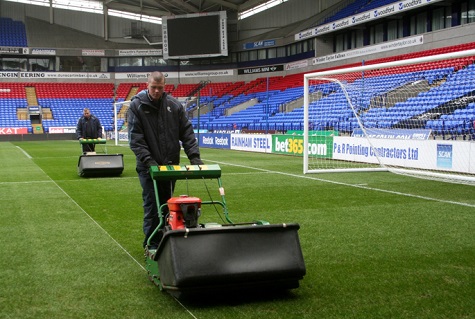
The Amenity Forum working with partners is promoting a week of celebration commencing September 20th - you can read more about it here!

Irrigation
Summer has finally arrived, with most parts of the country basking in this fine spell of sunny weather with temperatures exceeding 20 degrees during the hottest part of the day. However, for most grounds professionals this hot weather brings on another set of problems in that to retain turf quality they will need to irrigate.

Irrigation is an important and integral part of the turf grass management industry, especially as the demand for better quality playing surfaces has increased. This demand has been largely due to extensive televised coverage of major sporting events. Seeing immaculate, aesthetically presented golf courses, football, rugby pitches and horse racing courses has increased the expectations of the players and viewers.

Most, if not all, professional sporting facilities have irrigation systems of one sort or another. Without them they would not be able to prepare and maintain their playing surfaces.
Irrigation is essential for a number of reasons:
- for plant survival and growth.
- for soil formation
- for soil strength
- for chemical transport
- for managing playability
- for presentation
Water is influential in all chemical, physiological and biological processes of plant growth. The soil/plant water relationships is critical to the sustainability of any grass plant. Having an understanding of these relationships is critical. All grass plants are a continuum of water movement. Over 90% of the plant's water requirements are transported through the plant from the soil profile, via the roots and stem tissues into the leaves and out into the atmosphere. Knowledge of these relationships is important when designing and operating irrigation systems. The main aim is to achieve a water balance within the soil profile ensuring that the grass plant is able to access available water from the soil.
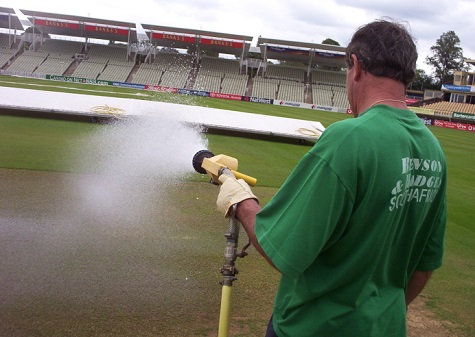
Irrigation management and the optimisation of watering strategies are important to the proper maintenance of sports facilities. Insufficient moisture when soils reach soil water deficit will result in a declining quality of sward, or even death. Legislation is going to force the industry to control and manage this scarce resource, therefore the understanding and implementation of an irrigation strategy is a must for all clubs and organisations.
 |
|
 |  |
WEEK OF CELEBRATION ANNOUNCED
By Amenity Forum and partners
Our first WEB ONLY story is the week will give an opportunity for all to learn more about what those managing amenity and sports spaces do to keep Britain moving.
BIGGA HAVE 'FRESH CONFIDENCE' FOR EVENT
Following updated lockdown timetable
Our next WEB ONLY story is BIGGA have released a statement saying they are pleased that the new date for restriction easing allows for the staging of their inaugural Festival of Turf.
|
 |  |
NEW VENTURE AIMS TO TRANSFORM GREEN SPACES
Into havens for nature and the local community
New eco-seed and tree business, Your Green, is calling on the public and private sector to think differently about green spaces.
A new venture called YourGreen says their mission is to transform dull spaces into inspiring havens for nature and the local community.
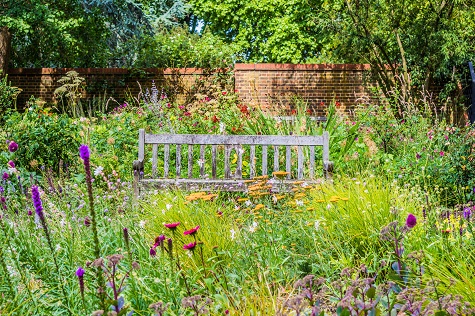
The new eco-seed and tree business is calling on the public and private sector to think differently about green space and consider the breadth of environmental, emotional and brand benefits of planting wildflower seed mixes, trees and hedgerows.
Co-founder of YourGreen, Bethan Pugh, points to their YourPact consultancy package, supporting the development of a sustainable and eco-friendly brand; offered alongside advice on the practical and technical aspects of creating inspiring green spaces.
“We work hand in hand with organisations to create a package of activities that help realise their green ambitions, from supporting a sustainable food chain to creating natural public spaces for the local community,” she says. “This could mean planting grassland, meadows, woodlands, hedges, environmental mixtures or donating wildflowers to community projects.
“Carbon sequestration is one aspect, but it’s wider that that – we’re thinking about offsetting biodiversity loss as well as focusing on the community, health and wellbeing.
“We’ve developed a whole range of wildflower mixes that have been created with those benefits in mind - right down to thinking about the impact on mood and mindset, with mixtures which promote relaxation, positivity and creativity."
Bethan continued, “There’s definitely an appetite for businesses and the public sector to make their premises and outdoor spaces more attractive and create a positive experience for all. The motivation could be one of mental health, conservation or attracting home workers back to the workplace.
“There’s an untapped demand that’s seeing organisations looking for ways to give staff, customers and the local community an opportunity to connect with nature."
Bethan says that the firm is also equipped to offer technical growing advice and has a strong philanthropic outlook.
Marking the launch of the new venture, YourGreen is supporting Children’s Gardening Week by donating wildflower packs to schools across Shropshire.
“Our aim is to encourage schools to take part in rewilding areas of the UK, educating children across the county about how planting wildflowers can support wildlife, conservation and connect with nature to increase quality of life,” she adds.
 |  |
CTM CELEBRATE 25TH ANNIVERSARY
Milestone for Stockport dealer
Toro dealer Cheshire Turf Machinery, based in Stockport near Manchester, is celebrating its 25th anniversary this year.
Toro dealer Cheshire Turf Machinery, based in Stockport near Manchester, is celebrating its 25th anniversary this year.
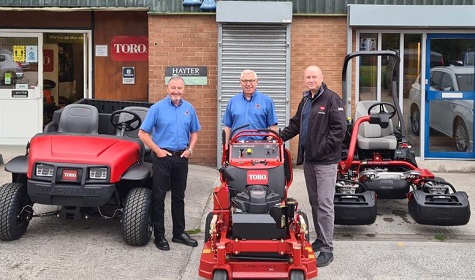
Steve Halley, managing director at Cheshire Turf Machinery, centre, with Peter McGreevy, sales director, left, and Mark Woodward, service director
Toro, and its UK distributor, have been involved with Cheshire Turf Machinery for at least the last quarter of a century and some time before that, as managing director, Steve Halley explains: “Initially set up as Cheshire Light Tractors in 1956 selling garden machinery and turf equipment, the company was bought by Flymo in 1980 and then by myself and my business partners in 1996. At that point, Toro was already a staple part of the business and Lely supported us with demo equipment when we took over. We changed the name to better suit the ethos of the business in the supply and servicing of professional turf equipment and set our focus on a mainly sports based portfolio of customers."
“The company has been through many changes, but one thing that has remained the same is our relationship with Toro and its UK distributor Lely, then Reesink.”
Steve says: “Toro has been involved in so many milestones over the last quarter of a century. Toro was our first machine sold and our 1000th, and when we decided to branch out into the market sector of councils and sports field mowers in 2013, becoming agents for the Toro Groundscare range enabled us to do that.”
In addition, Toro has also helped in the company’s expansion and as a result of continued sales growth they awarded Cheshire Turf Machinery with extra sales and service territory for its commercial golf mowers and equipment, primarily to cover South Yorkshire, culminating in the formation of Yorkshire Turf Machinery.
The other major contributing factor to the company’s success according to Steve is the experienced team. “Our staff are good at thinking on their feet, thinking laterally to solve our customer’s problems. It was really highlighted in 2020 just how much they care, and I can’t thank them enough for that as well as all their hard work over the years.”
Excellent staff retention means the company can call on over 200 years of industry experience. Special mention goes to company secretary, Bob Smithson. Steve says his wisdom and business acumen has helped guide the company from inception to present and his influence cannot be overstated: “Bob has been instrumental in the success of the business.”
Also key, has been the company’s ability to tailor flexible finance packages to specifically meet customer requirements.
Other company highlights include the successful relationship forged with football clubs such as Manchester City, Manchester United and Liverpool, as well as Preston, Blackburn and Oldham.
 |  |
11TH CONSECUTIVE HEALTH & SAFETY AWARD
For Ground Control
The landscape and maintenance contractor, is celebrating after landing a RoSPA President's Award for demonstrating high health and safety standards for the eleventh consecutive year.
Ground Control, the UK’s largest landscape and maintenance contractor, is celebrating after landing an internationally recognised award for demonstrating high health and safety standards for the eleventh consecutive year - the RoSPA President's Award.
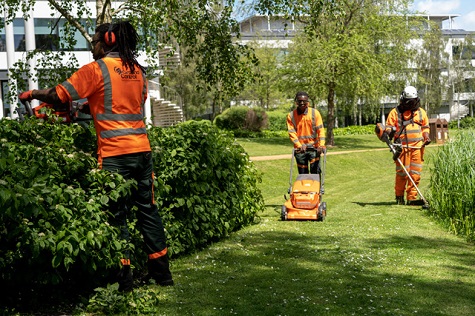
The Billericay-based company was among 2,000 other entrants hoping to win the highest accolade in what is the UK’s longest-running H&S industry awards.
“A huge well done to every member of the Ground Control family who has contributed to us winning the eleventh consecutive RoSPA gold award”, said Angelina Sooren, health and safety director, Ground Control.
“Together we seek to achieve an environment that is healthy, safe and injury-free - and the last 18 months have been extremely challenging for everyone in our industry. However, we have remained resilient and led robust covid initiatives to ensure we have continued operating and offering an excellent and safe service to all of our clients.
"Our vision is found on a desire to care for our environment, people and customers, and as we look towards the future, we will continually raise standards and inspire others. The hard work does not stop here. Here’s to the 12th award!”
 |  |
BASIS TAKES ON NEW TEAM MEMBERS
Two new staff members
BASIS has recently appointed a new business development executive and a head of digital learning.
BASIS has expanded its workforce with the recruitment of two new employees.
Jade Prince and Tanya Kesterton join the team to take on two new roles as business development executive and head of digital learning, respectively.

Jade Prince
Jade has a background in environmental science and is FACTS qualified. “My role centres around promoting the courses, boosting membership and building the network around BASIS’ target audience," she said.
As part of her role, Jade says she wants to focus on raising awareness of the courses that BASIS offers to the younger generation. “I am already working to develop the business through recruitment of new members, creation of new relationships and networking with other industry organisations.”

Tanya Kesterton
Reflecting a move towards delivering more digital courses, Tanya Kesterton joins the BASIS team as head of digital learning. With a strong background in education and IT, Tanya is looking forward to building BASIS’ digital education capability. “I want to look at supporting the current members and work on reaching a wider audience through our digital platforms,” she says.
“BASIS has a really strong vision for what they want to do and where they want to go, and I’m delighted to be part of this journey.”
 |  |
STIHL & DEALER RAISE FUNDS FOR GREENFINGERS
Minutes Mowed Challenge
The charity contest saw the manufacturer go head-to-head with dealer Sims Garden Machinery to see who could clock up the most minutes’ mowing over 10 weeks.
To support the tenth anniversary of Greenfingers charity’s Garden Re-Leaf Day, STIHL launched the Minutes Mowed Challenge.
The contest saw the manufacturer go head-to-head with long-standing dealer Sims Garden Machinery to see who could clock up the most minutes’ mowing over 10 weeks.
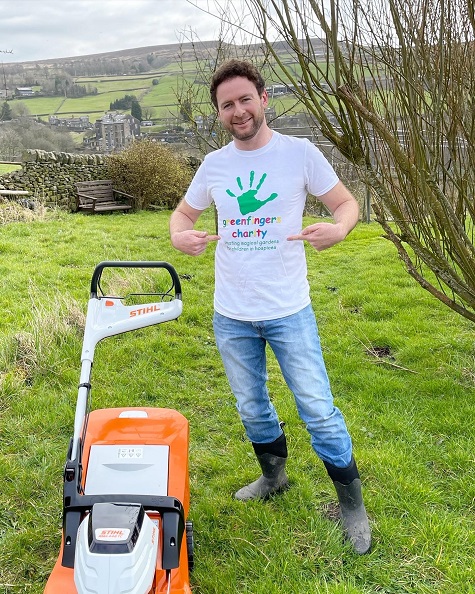
Jack Wallington of the Daily Telegrapgh was on Team STIHL
The challenge came to a close in May with Team STIHL, which included Jack Wallington, garden writer for the Daily Telegraph, taking the lead with 2,229 minutes whilst Team Sims clocked up an impressive 1,992 minutes of mowing.
Garden Re-Leaf Day is an annual nationwide event that raises funds and awareness for Greenfingers, a charity that supports children who spend time in hospices by creating inspiring gardens and outdoor spaces for them to enjoy. It’s supported by gardening clubs and societies across the country, as well as garden centres, growers, suppliers, manufacturers and trade associations.
Speaking of the challenge, Greenfingers’ director of fundraising and communications, Linda Petrons, commented, “The physical and mental health benefits of being able to sit outside and breathe in fresh air are immense. Whilst many of us have been able to spend time in our gardens enjoying the weather, this hasn’t been any option for some of the most vulnerable children in our communities. As a result, the need for well-designed outdoor spaces has been amplified with more and more hospices joining the waiting list for our help.
“The money raised from Garden Re-Leaf Day by STIHL and Sims Garden Machinery, as well as many others across the country, will help to ensure that thousands more life-limited children and their families can benefit from magical and inspiring outdoor spaces in 2021 and beyond.”
Simon Hewitt, head of marketing at STIHL GB, said, "STIHL GB has been supporting the Greenfingers charity for a number of years and this year, we wanted to get creative and try a different and more competitive approach to fundraising.
"Well done to everyone who took part in supporting our Minutes Mowed challenge and for pushing through the last 10 weeks, come rain, shine, high winds and even hail.”
During this challenge, STIHL raised £582 for its’ current charity partner Greenfingers, and a number of further fundraising activities will take place through the course of 2021.
 |
|
 |  |
ADVERTISE YOUR JOBS HERE
Amazing success rates!
Advertise your recruitment needs on TurfPro Weekly Briefing and reach our targeted audience of recipients every week.
Contact Nikki Harrison for details - 01491 837117
|
 |  |
EDITOR'S BLOG ARCHIVE
Catch up with Laurence Gale's recent blogs
Want to catch up with one of editor Laurence Gale's blogs? Here is the place to do so.
TURFPRO FEATURE ARCHIVE
Find our previous features here
If you want to catch up with any of TurfPro's previous features, here is the place to do so.
WILD AND WONDERFUL
Design By Nature
LEARNING HOW TO SURVIVE
Abbey Par 3
TACKLING OBESITY
Vital that schools can provide sport
A LIFETIME OF LEARNING
Vital for turf professionals
CELEBRATING 125 YEARS
Tullamore Golf Club
UNIVERSITY CHALLENGES
At Trinity College Dublin
BLENDING THE OLD WITH THE NEW
Bray Golf Club
A WELL POLISHED COURSE!
Ierne Social And Sports Club
IDENTIFYING THE TRUE VALUES
Of grounds maintenance
THE INDUSTRY WILL CHANGE & ADAPT
But it will survive
WIRRAL GOLF COURSES SAVED
Renewed hope and optimism for the future
GREEN SPACE CONTRIBUTION TO WELLBEING IS UNDERVALUED
Parks invisible on national agenda
A SHINING LIGHT IN IRELAND'S SUNNY SOUTHEAST
Wexford Golf Club
GREEN SPACES DO NOT LOOK AFTER THEMSELVES!
Keith Kent says we must invest in people
WE SHOULD TELL THE WORLD ABOUT THE UK INDUSTRY
Right time for all sides to come together
SOIL LIFE IS PRECIOUS
Good-quality soil can help save the planet
MORE THAN JUST CUTTING GRASS
Encouraging the next generation
A BUZZ FROM DOING THE JOB
Wide experience of the turf grass industry
PAYING THEIR WAY
Low wages is the bane of the industry
AMENITY MANAGEMENT IMPACTS US ALL
Professor John Moverley
CARING FOR PARKS OF ALL TYPES
Mary Worrall
TOP FIVE FRUSTRATIONS FOR CRICKET GROUNDSMEN
What causes you the most frustration in your role?
PROFESSIONALS AT THE CUTTING EDGE
Vic Demain and Phil Sharples
BOWLS CLUBS IN PERIL
A sad decline
A VERY SPECIAL INDUSTRY
Loz looks back
SNEAK PEAK AT A ROBOTIC "GAME CHANGER"
Commercial model capable of covering 50,000 m2 teased
HALESOWEN PICK A BIG ROBOT UP FRONT
Invest in mowers
COMPRESSED AERATION
The new way
PARKS MATTER MORE THAN EVER
Recent sector developments
ON TEST
STIHL blowers
THREE CORE VALUES TO SHAPE OUR INDUSTRY
Real concerns for the future
ENGLAND'S GREEN SPACE GAP
A split along racial lines
ON TEST
EGO STX3800 strimmer with RTX2300 Rotocut head
A SECTOR FACING IMPORTANT TIMES
Review of the National Action Plan
PARKS MATTER
The role of public parks in the recovery: a discussion paper
A UNIQUE SPORTING VENUE
Wormsley private estate
A BTME OUTDOORS?
A good bet for the industry
PARKS NEED APPROPRIATE POLITICAL REPRESENTATION
Q&A with Philippa Reece, Parks and Foreshore Manager at Adur and Worthing Council
CRICKET LOAM
What does it mean?
A HERCULEAN EFFORT TO GET PARKS BACK TO NORMAL
Q&A with Chris Worman, Rugby Borough Council’s parks and ground manager
ON TEST
STIHL battery products
TURFGRASS STRESS MANAGEMENT
Reactive Oxygen Species (ROS) and antioxidants during biotic and abiotic stress in turfgrass plants
AUTUMN DISEASE MANAGEMENT
The coming months are going to prove very difficult
THE ABUSE OF PARKS . .
Is the abuse of society
WHY PARKS MATTER?
A statement from the Parks Management Forum to the Prime Minister
THE 21st CENTURY PARKS MANAGER
Innovative, creative and entrepreneurial
EAT, SLEEP, CUT, REPEAT!
Cricket under covid
TIME FOR A SINGLE SHOW?
Debate brought back into focus
A CHALLENGING TWO MONTHS
Running golf design projects from home
PRESSURE SITUATION
Cementing the reputation
A CLUB TO BE PROUD OF
10 years at the helm of Olton GC
GAME CHANGERS IN TURFCARE
The day the Lord's outfield reconstruction proved its worth
THE ESSENCE OF ESSENTIAL
Finding a sensible way forward on defining "essential maintenance"
THAT WAS THE YEAR THAT WAS
2001
HOW TO LOOK AFTER A GOLF COURSE WITH NO GOLFERS
Fundamental to the survival of almost all courses, if not of the game itself
RAIN STOPPED PLAY WOULD BE WELCOME
. . along with ‘lunch is being taken early’
PHYSICAL CONTROL OF TURFGRASS PESTS
An urgent problem
A DIVERSE & ENTERTAINING WEEK
Successful BTME 2020
INTEGRATED PEST CONTROL
Opportunity to embrace new methods
ENVILLE ON THE UP
Major investments taking place
GREEN FLAG AWARDS 2019
A great success
U.S PROFESSIONAL EQUIPMENT SHOW EXCELS
Buoyant GIE+EXPO
LEGACY OF THE SOLHEIM CUP
At Gleneagles
A DAY OUT WITH THE LADIES
Behind the scenes at the Solheim Cup
COVENTRY UNIVERSITY'S EDIBLE GARDEN SUCCESS
2006 - present
HAIL THE GRASS MASTERS!
Boorish media comments about pitch quality are wide of the mark
CONTRACTOR SEES MULTI-DISCIPLINE SUCCESS
360 Ground Care serving professional facilities
BUSY TIMES
Judging the Green Flag Awards
TAKING AN INTEGRATED APPROACH
What does it all mean in managing turf surfaces?
UNDER PRESSURE
Dry weather conditions continue to keep turf managers focused on moisture management
EDDIE SEAWARD
Death of Wimbledon’s influential grounds manager
MAJOR NEW IRRIGATION PROJECT
At Top 100 classic Berkhamsted Golf Club
NEW HORIZONS FOR THE HATTERS
Investment paying off at Kenilworth Road
ELIZABETHAN RESTORATION
At Castle Bromwich Hall Gardens
WHAT IS BIOPHILIA?
The vital impact of parks and green spaces on health and well-being
WORM CONTROL
Without carbendazim
THE TRUE COST OF PETROL
Battery-powered outdoor power tools are now turning the heads of professionals
SANDS OF TIME
Sand-based pitches are now the norm in professional sports
WHY DO WE DO THE RIGHT THING?
We must maintain industry standards
CHASING GRASS PERFECTION?
11 things you need to know . . .
MAINTAINING STANDARDS
Q&A with BASIS ceo, Stephen Jacobs
STRI RESEARCH DAY 2018
Hosted at research trial grounds in Bingley
THE MECHANIC
Leicester City FC invest in new role
LORD'S 'GRASS-GUVNOR' TO RETIRE
Mick Hunt bows out after 49 years
HOLLOW CORING & DEEP SCARIFICATION
Is it really necessary?
 |
|
 |  |
 |  |
 |  |
 |  |
ON A MISSION
Wrekin Golf Club aiming to enrich wildlife and fauna
by Laurence Gale, TurfPro editor
Head greenkeeper Harry Jones, as well as concentrating on improving playing surfaces, tees, greens and fairways is on a mission to raise the the levels of the biodiversity of the course.
A few weeks ago, I was invited to visit Wrekin GC, a Shropshire golf club steeped in history. Formed in 1905, it resides on the slopes in the shadow of the famous Wrekin Hill. A truly picturesque golf course surrounded by natural woodland, it benefits from spectacular and inspiring views across and beyond the North Shropshire plain.
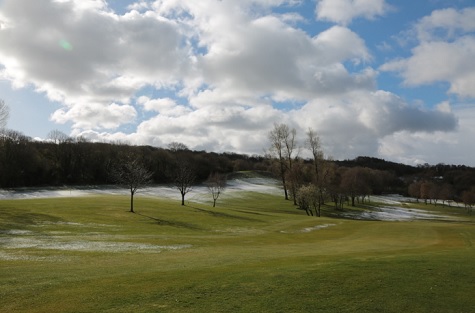
I was there to witness the delivery of a Wessex STC 180 grass collector / scarifier that was being delivered by Matt Lewis from Charlies Groundcare & Machinery, Welshpool. The course manager Harry Jones had already trialled the machine last year and had persuaded the committee, with the help of local botanist John Handley, of the benefits this machine would bring to the club over time.

The course was remodelled in 1910 and the renowned golfers Harry Vardon and George Duncan were secured to play an exhibition match on the first day of opening. Today most of the greens are still the original clay, pushed up greens that were constructed all those years ago.
This par 66, 5599 yards long course has no hidden hazards. The difficulty comes from good golf course design and course management, with a premium for being in the right place to attack the tricky greens.
Course manager, Harry Jones, began his greenkeeping career as assistant greenkeeper at Shrewsbury Golf Club working under Dan Perry (head greenkeeper) & Chris Roberts (course consultant) in 2008. He fell straight in love with the job, gained NVQ level 2 & 3 within the first 2 years of being there then quite quickly had the chance to move to the Wrekin Golf Club in 2011.
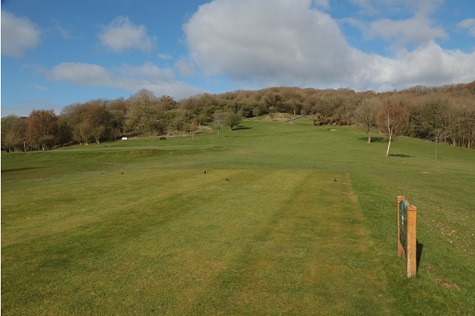
He began working under the guidance of the club’s agronomist Chris Roberts and then in 2014 Harry took on the role of head greenkeeper. Harry has a team of four greenkeepers to help maintain the course - Gary Turner, Tony Cheese, Alex Brasenell and Liam Williams. Harry is very much hands on and all five are kept busy maintaining this parkland course.
Like most head greenkeepers, Harry has spent the last several years improving the playing surfaces, tees, greens and fairways.
Greens:- These are maintained at a winter height - 4.5mm and summer height - 3mm. Target speed for greens during the summer is around 10 on the stimp meter depending on conditions and they can run much quicker due to the undulations on the greens.
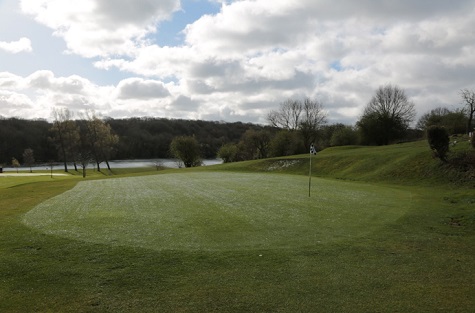
Tees:- Kept at a winter height - 16mm and summer height - 12mm
Fairways:- Winter height - 19mm and summer height - 16mm
The greens are worked on every day. Tees, approaches and fairways are cut generally three times a week during growing season. Aeration and dressing is carried out as much as possible during both winter and summer with a target of getting down at least 100 tonne of dressing across all putting surfaces
As for major works, the club have Installed new drainage systems into seven greens (one a year), with all this work being carried out in house by their staff. Seven new bunkers have been recently installed with the aim to construct a further three every winter.
Last winter the club invested a lot of money in improving pathways, relaying with tarmac and kerb edgings to improve trolley access around several busy areas of the course.
Apart from keeping the basics going, Harry is on a mission to improve the biodiversity and management of the course. He is keen to improve its aesthetics and increase the value of its natural assets, spending more time on woodland management and ecological management of the longer grass areas of the course - hence the investment in the Wessex STC 180.
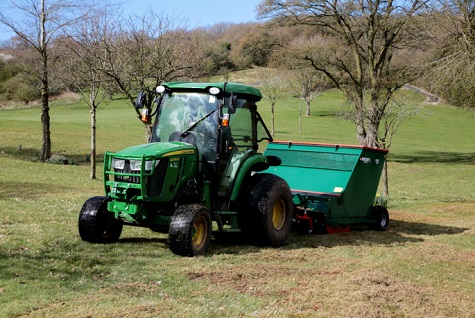
By better management of these native rough areas, through scarifying every year, this will not only enhance the finer grass species to come through but will also save on man hours - vastly improving visual aspects of the golf course whilst encouraging more wildlife.
Alongside this work Harry is also overseeding with appropriate wildflower mixes to increase the visual aspects of certain parts of the course:-
- Behind the 9th green - Colour Splash & Aurora
- Front of 14th tee - Heavy Shade & Woodland along with Heavy Clay Mix
- 18th Tee area - Restore & Rich along with Cornfield Annuals
One of the biggest drivers towards this investment was the club investing in the expertise of John Handley, one of my old work colleagues at Maxwell Amenity. John is a well respected agronomist and ecologist and has worked with many greenkeepers. Living local, he was on hand to help Harry come up with a long term solution to improve the biodiversity of the course.
After several visits, meetings and the results of John’s ecology survey, Harry was in a better position to advocate the recommendations and get the club’s agreement to invest in the Wessex STC 180 he could then start improving the aesthetics, biodiversity and enrichment of wildlife and fauna at Wrekin GC.
I am pleased to say, I have received an account of John’s work and his thoughts on how Harry can continue to improve the course. Look out for next week’s edition of TurfPro where we’ll publish John’s report.
 |
|
 |  |
FROM ACROSS THE IRISH SEA
|
WORKING ON A TIGHT BUDGET
Nenagh Golf Club
by Alan Mahon, TurfPro's Ireland editor (Words & Pictures)

With funds tight, head greenkeeper Mark O’Donohue and the greenkeeping team have to make sure there is no wastage and have come up with techniques to make a little go a long way.
Situated in the heart of the County Tipperary countryside, Nenagh Golf Club is a wonderful 18 hole course that is a joy to play. It originally started out as a 9 hole, Alister McKenzie designed course. The layout was considered one of the best 9 hole courses in Munster and remained substantially unchanged until 1973, when Eddie Hackett designed its first 18 hole course.
When I arrived at the club car park I was greeted by the Course Superintendent, Mark O’Donohue, who showed me around the course. The ground was very firm and dry, mainly due to the fact that Nenagh golf course lies on a sandy, gravel bed within rolling esker undulations. This means that the course mostly remains dry, especially in winter. If you were not aware of the sand and gravel lying underneath, the rabbits living on the course would soon remind you. They have dug many burrows around the course revealing beautiful silver sand.
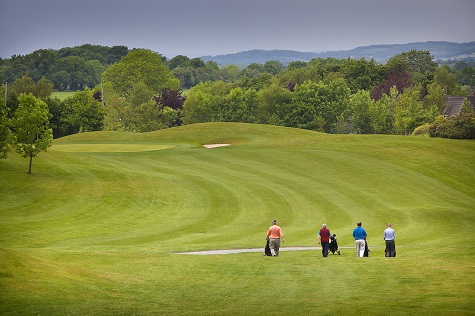
The 9th hole
History
The club was formally established as a 9 hole course in 1929, designed by Alastair MacKenzie for a fee of £15 & 10 shillings. There is evidence to suggest that Nenagh had a golf course back in 1890, probably on or near the same site as the present course. It is thought that the1890 course was mainly used by the military as Nenagh was formerly a garrison town. Access to the course was relatively easy back then as it bordered the Ballybrophy – Nenagh railway line just like the course does today. An extract from The Irish Golfers Guide circa 1905 states:
Nenagh Golf Club (Co. Tipperary)
Founded 1890. A nine holes inland course, within half a mile of Nenagh Station (railway) G.S.W.R.
There is another reference to the club being in existence on the same site prior to 1929 as a receipt was discovered stating the following:
Received from The Nenagh Golf Club per M. Gleeson Solicitor. The sum of one pound three shillings on account of work done in taking down and removing the Golf Pavilion at Beechwood. Dated 17th February 1923. Signed: Wm. Costello.
It is at Beechwood where the present club is located so one can assume that the club existed before it formally registered with the GUI in 1929.
The club originally rented land but within ten years of its recognized formation, in 1929, the club was able to buy the property that the course was built on and were now no longer tenants but owners of the land. The area of land it bought outside the 9 hole layout was rented out for grazing. In the early 1970’s this extra piece of ground came to the club’s rescue, as it was used to extend the course to 18 holes. The club employed the services of Eddie Hackett to design the new holes, which was opened for play in 1973. It was during this time that the club installed an irrigation system.
The purchase of additional land in the 1980’s and 90’s allowed the club to undertake a major re-development. The late Patrick Merrigan designed the new18 hole course layout and construction was completed in 2001. Interestingly, thirteen of the 18 holes had newly constructed sand based USGA specification greens. The other five holes stayed as push up soil greens – four from the Eddie Hackett design and one (the 8th green) from the original MacKenzie design of 1929. The course now extends over 150 acres of beautiful natural undulating terrain.
The course superintendent at Nenagh is Mark O’Donohue. He has been working there for twenty one years. He started as an assistant when the new course was in the last stages of construction and grow-in and in 2001 he was promoted to Course Superintendent. Before moving to Nenagh, Mark spent three years working at Druids Glen where he helped prepare the course for three of the four Irish Opens held there. Mark has four staff working with him all year round, some of whom have worked many years with the club.
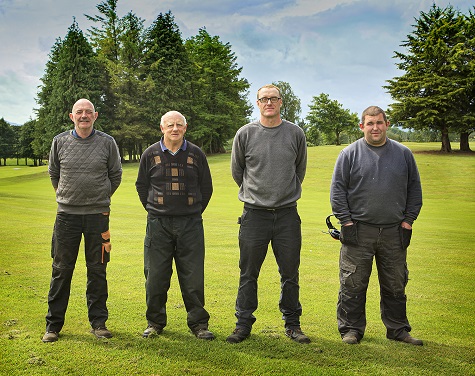
Greenkeeping staff from left: Tom Lawlor, Martin Kennedy, Mark O’Donohue, James Redden
Maintenance
Mark and the greenkeeping team maintain the course on a tight budget, which means that he has to make sure there is no wastage. He is very sparing on nutritional outputs and hasn’t used granular fertilizer for almost nine years. During the winter he dissolves sulphate of ammonia with sulphate of iron and sprays it on the greens. It keeps the greens ticking over during the winter with the iron giving the grass strength against diseases. This feeding pattern changes to using liquid urea from spring onwards sometimes changing to a liquid feed, depending on soil sample test results.
Preventative applications of fungicide are applied when weather conditions favour disease outbreak. Around 175 tonnes of sand is put out on the greens every year. Little and often is the method of application where greens are topdressed every two weeks throughout the year. With year round dry ground conditions this can easily be achieved at Nenagh.
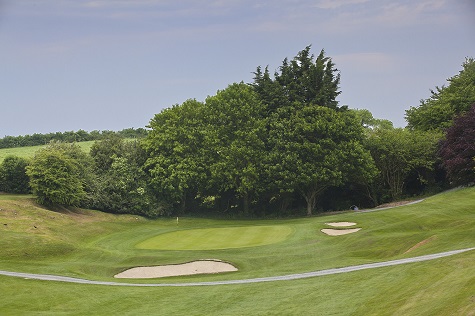
The original McKenzie 8th green dating back to 1929
In Spring and Autumn the greens are overseeded with an 80:20 mix of fescue and browntop bent. The height of cut for greens is 3.5 – 4mm in summer increasing to 6mm in winter. Surrounds and tees are cut at 12mm while fairways are mown at 16mm. The semi rough is maintained at 30mm (1.25 inches) while the rough is cut at 50mm (2 inches). Automatic irrigation is installed on tees and around greens.
A project that is planned for the future is to reduce the size of the bunkers around the course, some of which have already been filled in. When more work on the bunkers begin, any steep faced bunkers will be reduced. The idea of installing Ecobunkers to some of the bunkers is being thought of. This should minimise maintenance costs and time on bunkers.
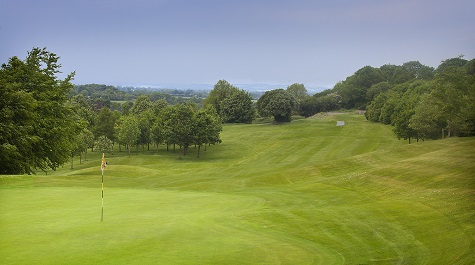
A view of the 13th hole
There is an area on the course where Mark and his staff have access to gravel. It is located beside an old small disused quarry, once used by a neighbouring farmer. If there are any areas on the course that need draining then this is the place where drainage stone can be sourced, saving the club a lot of money.
When the club opened for play in 1929, it was mainly open rolling countryside with some ferns and gorse. Most of the trees that are growing throughout the course were planted since then so there are no mature oak or beech trees. In a peculiar way this is an advantage for Mark and his team as they do not spend too much time during autumn/early winter blowing and gathering up leaves from the course. Someday though, in about thirty or forty years from now, it will be a headache for a future course superintendent.
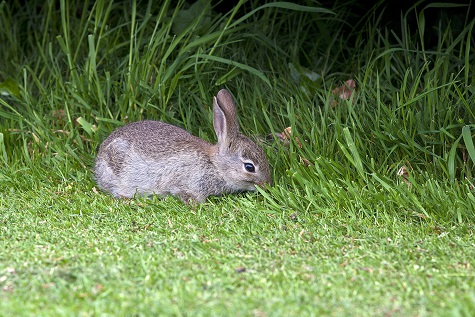
A young rabbit grazes unconcerned on one of the tees
In 2016 the club wanted some way of commemorating the centenary of the 1916 Easter Rising. Thomas McDonagh, one of the signatories of the proclamation, was born up the road in nearby Cloughjordan so the club feel there is a strong connection to the Easter Rising. They decided to plant seven beech trees, along with erecting a commemoration plaque near the putting green to commemorate the event.
The lockdowns of 2020 and 2021 provided some opportunity for Mark and his team to carry out some repairs and new projects on the course. Three tee boxes, the 7th, 8th and 15th, had developed crowns or ridges over many years of topdressing. Having no golfers on the course enabled Mark to strip the turf from these tee boxes, grade and level them and replace the turf back again without having the need to create temporary tee boxes.
After May 2020, when golfers were allowed return to the fairways after the first lockdown, Nenagh Golf Club saw a big increase in membership. It is thought that the reason for this was that the GAA clubs were still not fully opened and only limited to training with a restricted number of players. This would have left a need for people to take up golf as a way of getting in some exercise. The club wasn’t complaining as it brought in much needed income.
However, as we all know, golf clubs were forced to shut again in December 2020, due to another outbreak of Covid-19. Not allowing the grass to grow under their feet, Mark and his team took advantage, once again, of an empty course. Around 45 semi-mature trees were replanted. This involved hiring in a tree spade, which allowed for an efficient method of transplanting and also minimizing the amount of stress to the trees during transporting. The vast majority of them were still thriving when I visited the course in June.
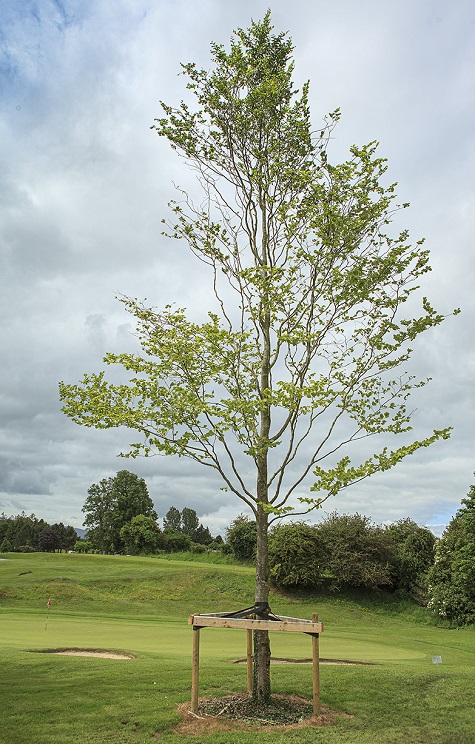
One of the semi-mature beech trees that were transplanted using a tree spade
Wildlife is encouraged on the course. There are many wild animals to be seen such as foxes, red squirrels, rabbits, badgers and buzzards. Some of the club officers came up with the idea of creating a bug hotel and putting it out in a non-playing area of the course. This was thought to be a good idea so they, and some volunteers, started the task of creating the bug hotel which was installed near the 8th hole.
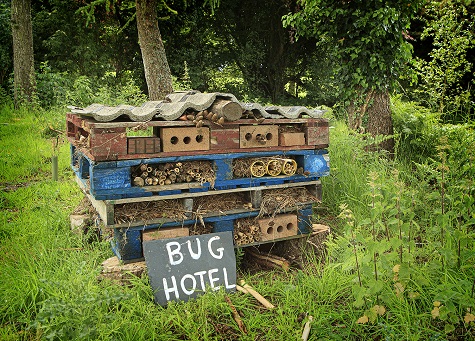
The bug hotel
Interesting facts
- During World War Two the club informed members that golf balls were to be rationed. An allowance of only two golf balls per member, per week was the rule. Given the state of the rough at the time it was not unusual to see members return to the clubhouse having not completed their rounds.
- In 1944 the assets of the club included a horse, valued at £39. Prior to this an animal was borrowed to cut the fairways and rough. In 1947 a gang-mower, valued at £166 was purchased, along with another horse. In 1949 the club bought a tractor valued at £77.
- In the early years the course was only open for play in the winter as it was handed over for grazing livestock during the summer months.
- The Revenue Statement for the year ended 31st December 1936 showed that £35 and 5 shillings was spent on the upkeep of the course.
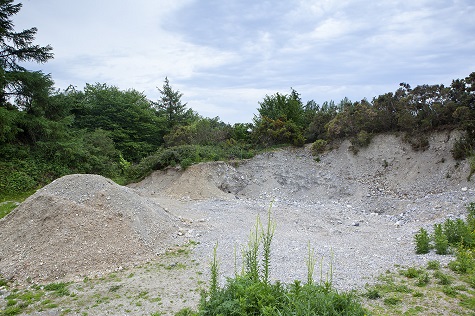
The quarry where gravel is used for drainage around the course
 |
|
|
|